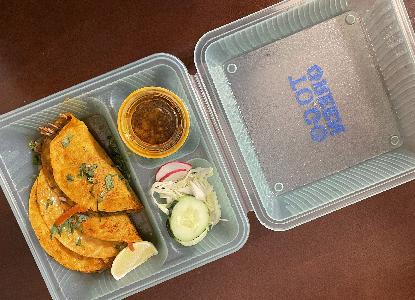It’s 2022. Are you still hiring the same way you did in 2019? 2015? 2010?
The last two years have been a time of pivoting and outright change for companies bringing on new employees, especially in tech. That includes the likes of Wilmington, Delaware’s Marlette Funding offering new hires work options ranging from in-office to hybrid to remote, as well as telecomms giant Comcast shutting down a nearly new, state-of-the-art Newark call center in 2021 because call center employees just don’t need to work out of an expensive office.
The personal computer-centric tech industry lends itself more easily to flexibility of worker location. Knowing that different employees thrive under different work environments, tech employers also need to be increasingly flexible about how they hire.
After all, in the shadow of the Great Resignation, the power dynamics have shifted somewhat. Prospective employees post-2020 expect that employers consider their well-being even in the job listing stage and not make them perform undue labor in order to get a job interview. It’s evident any time you look at hiring Twitter …
90% of the time it would keep me from applying. Like idk, you should be selling me on your company I have no idea what your inner workings are like, write ME a cover letter
— Alison (@YouSoFancy) February 13, 2022
… especially so in the commiseration following this story of 15 interviews for a Big Tech company:
https://twitter.com/femalemsktr/status/1493585670165696515
Some tech companies have done away with cover letters; Brooklyn-based Huge did in favor of video, at least for a while, back in 2017. Some hiring managers continue to swear by them. But this isn’t really about cover letters. It’s about how companies have to stand out and show talent they’re worth working for.
Case in point: One-click apply job sites allow jobseekers to apply for limitless jobs in a week, which can fill a company’s inbox with hundreds of applications. That sounds great in such a competitive hiring environment — until you, the hiring manager, have to sift through hundreds of applications to find a handful of quality, or at least actually relevant, candidates.
Those numbers are not dropping any time soon: Learning management system TalentLMS recently found that more than 70% of surveyed tech workers said they’ll be looking for a new job in the next 12 months. And that’s not including graduates of computer science programs and coding schools.
So how do you manage job applicants while preventing good candidates from running for the hills if you make the initial application more involved than a single click?
To stand out to prospective applicants, hiring managers should showcase your company's culture and play up what you can offer them — aka your employee value proposition.
You can take advantage of the tools on career sites like LinkedIn, one of the best-known websites to offer one-click application. If the employee is serious about their digital job search, their LinkedIn page will give you insights on their soft skills, the past projects they’re most proud of and even their personality, if they post regularly.
In many cases, the most talented and well-rounded candidates know they’re desirable, even if they’re not the most experienced.
“It’s a seller’s market,” QuotaPath founder AJ Bruno told Technical.ly in November, stressing that employers have to be proactive.
You don’t have to literally write an employer cover letter like the tweets above suggests, but showcase your company’s culture and play up what you can offer them — aka your employee value proposition. (Note: Technically Media CEO Chris Wink has written extensively about this and related hiring topics in his Culture Builder newsletter.) And keep in mind that a lot of prospective tech employees want hybrid or remote work options, even when the safety concerns over COVID-19 are removed.
Other companies might snap up the candidates who are most skilled on paper, and competing with big corporations for talent can seem futile. It’s important to remember, though, that the best candidate for your tech position may not be the most experienced or the one with the longest list of certifications, but the one who is ready to learn and be led, with room for growth.
Melissa Richardson, dental insurance startup Kleer’s VP of team success, is in charge of screening resumes, scheduling and conducting video interviews, and coordinating the onboarding process for new employees. Kleer has a skills assessment, but it’s not the main focus during the hiring process.
“We can teach the hard skills of our openings through the use of training, shadowing, mentoring and professional development courses.” she said. “The new hire just needs to have a willingness to learn and an openness to coaching. Tech skills are important, but when you find the right combination of raw materials in a candidate — passion, drive, coachability, and so much more — and you harness them correctly, that’s when the magic happens.”
It’s a new year, and a new stage of the pandemic. Don’t get left behind.
Before you go...
Please consider supporting Technical.ly to keep our independent journalism strong. Unlike most business-focused media outlets, we don’t have a paywall. Instead, we count on your personal and organizational support.
3 ways to support our work:- Contribute to the Journalism Fund. Charitable giving ensures our information remains free and accessible for residents to discover workforce programs and entrepreneurship pathways. This includes philanthropic grants and individual tax-deductible donations from readers like you.
- Use our Preferred Partners. Our directory of vetted providers offers high-quality recommendations for services our readers need, and each referral supports our journalism.
- Use our services. If you need entrepreneurs and tech leaders to buy your services, are seeking technologists to hire or want more professionals to know about your ecosystem, Technical.ly has the biggest and most engaged audience in the mid-Atlantic. We help companies tell their stories and answer big questions to meet and serve our community.
Join our growing Slack community
Join 5,000 tech professionals and entrepreneurs in our community Slack today!






